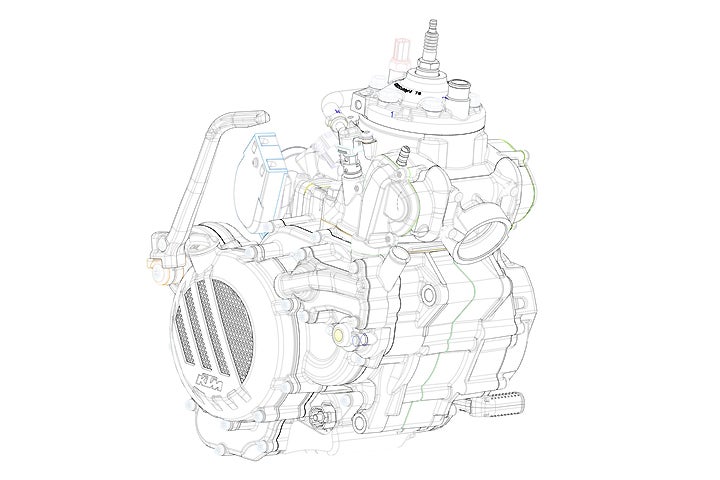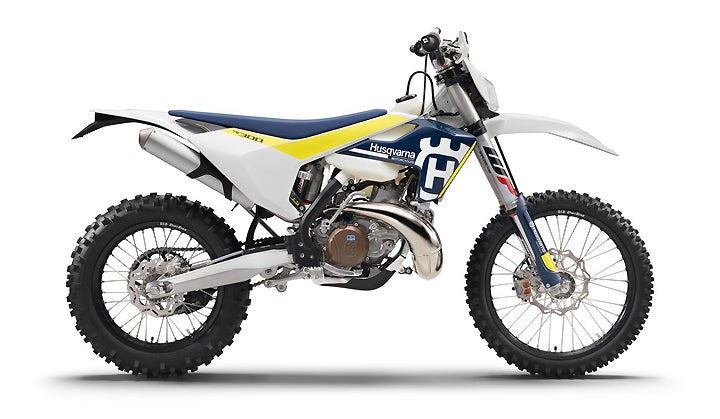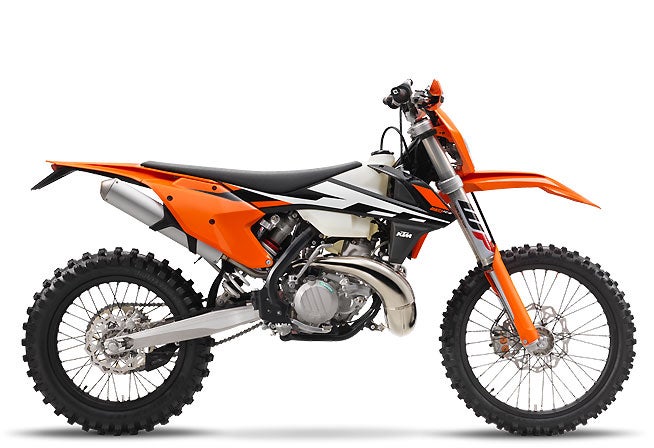The press release from Husqvarna listed below, regarding its plan to offer fuel-injected two-stroke enduro models, should come as no surprise. After all, KTM just recently broke news of its plans to introduce fuel-injected two-stroke models. Husqvarna and KTM are sister companies. Like we said, no surprise.

But what could these announcements mean? The answer is really good things for the motorcycle industry and dirtibike enthusiasts in general. We’ll get to that, but first the Husqvarna press release:
HUSQVARNA MOTORCYCLES INTRODUCE FUEL-INJECTED TWO-STROKE ENDURO MODELS
Revolutionary new TE 250i & TE 300i machines set to change perceptions about two-stroke enduro bikes.
Husqvarna Motorcycles proudly announce the introduction of their next generation fuel-injected two-stroke enduro motorcycles. Perfectly embodying the brand’s pioneering spirit, the new from the ground up 2018 TE 250i and TE 300i machines will feature engine technology that is set to revolutionize the field of two-stroke enduro motorcycles.
Enjoying over a century of uninterrupted design, development and production, Husqvarna Motorcycles are now set to add another benchmark to their impressive timeline of innovations. Being one of the oldest motorcycle manufacturers, and the first company to ever produce a purpose-built off-road bike, Husqvarna Motorcycles have always been a great advocate of two-stroke technology.
From Rolf Tibblin’s first Motocross European Championship in 1959 to the golden age of motocross during the 60s and the 70s, Husqvarna has remained a dominant force in the segment of high-performance two-stroke off-road motorcycles. With their new generation of fuel-injected two-strokes arriving soon, Husqvarna Motorcycles will proudly start a new chapter in their history of pioneering innovation and forward-thinking development.
This revolutionary new technology will go into production in June. Additional information about Husqvarna’s MY18 two-stroke enduro models will be released on May 30, 2017.
Here’s the truth as we see it: Most tech-savvy people know that two-strokes make more power per cubic centimeter than four-strokes–opinions vary from as much as 30 percent more to potentially nearly twice as much. Additionally, that power is made by an engine that is far less complex and has fewer moving parts than a typical SOHC or DOHC four-stroke engine. So why haven’t all of the major manufacturers continued to embrace and develop two-strokes?
Emissions is the biggie. Whereas four-stroke engines feature intake and exhaust valves that are timed to open and close via a camshaft in order to provide the most efficient cylinder filling and scavenging for greater efficiency, that job in a two-stroke is left to the piston. On carbureted two-strokes, some raw, unburned fuel inevitably makes it past the piston and out the exhaust port, emitting unburned hydrocarbons into the atmosphere–and that’s not a good thing.

Now, tackling this problem has been nothing new in other recreational powersports segments. Companies such as Bombardier have been using direct fuel-injection two-stroke engine in their personal watercraft models for a long time already, and Polaris was using the technology on its (now defunct) personal watercraft line as well as its snowmobiles as far back as 15 years ago. Direct injection makes sense, as it is basically a squirt of fuel that is precisely timed to eliminate the chance of unburned hydrocarbons making their way out the exhaust port, which equates to cleaner-burning engines.
Great, you say. So if this stuff has been around for 15 or 20 years, why haven’t all the manufacturers continued to build two-stroke MX and off-road machines?
The OEMs that we’ve discussed this with have long used the emissions argument–okay–and also said that it is easier to tailor the power delivery of a four-stroke engine than it is with a two-stroke engine. We don’t buy that second one at all, at least not for the dirtbike market and not with all of the advances that have been made in tractional control systems on off-road four-strokes by companies such as Husqvarna and KTM.
No. Emissions aside, the reason two-strokes fell out of vogue in the dirtbike market had less to do with power shaping and more to do with parts sales. Everyone knows that the manufacturers don’t make money on high-performance motocross and off-road dirtbike sales when compared to the amount of R&D money that goes into those models. And no matter what dealer you visit, any of them will tell you that their profits are largely based on parts sales and service rather than on the actual vehicle sale. Take American cruiser manufacturer Harley-Davidson, for example. At one time, it was documented that every new Harley owner who rolled out of the showroom also left with an average of $3000 in parts and accessories. Three thousand dollars!
Everyone wants to make money, but the dilemma for the OEMs in the stroke scenario is probably something like this: How do we recoup the money for R&D manufacturing by selling less than half of the parts we sell for four-strokes during the maintenance life of the product? After all, two-strokes are far simpler to rebuild than four-strokes–no cams, timing chain, valves, springs, piston, rings, etc. It’s just a piston and rings, dropping the potential parts bill alone to less than half that of a two-stroke. Way less. The same goes for the labor time necessary to rebuild a typical two-stroke engine compared to a four-stroke. With a two-stroke, you just slap the new piston and rings in, and button ‘er up. Four-strokes additionally require careful installation of the intake and exhaust valves along with all of their various parts, then making sure the valve time is properly set. That takes additional labor time, and time is money.

Thank goodness that some of the OEMs, namely KTM, Husqvarna, and smaller European manufacturers have continued never given up on two-stroke motocross and/or off-road development; Yamaha is the only Japanese manufacturer currently selling two-strokes that are larger than a mini (the YZ125 and the YZ250), and its engines have been relatively unchanged for years.
Maybe it’s just time that the pendulum swing back the other way, just as it did when the dirtbike world went from four-strokes to two-strokes in the mid 1960s and then back to four-strokes in the late 1990s.
 Your Privacy Choices
Your Privacy Choices